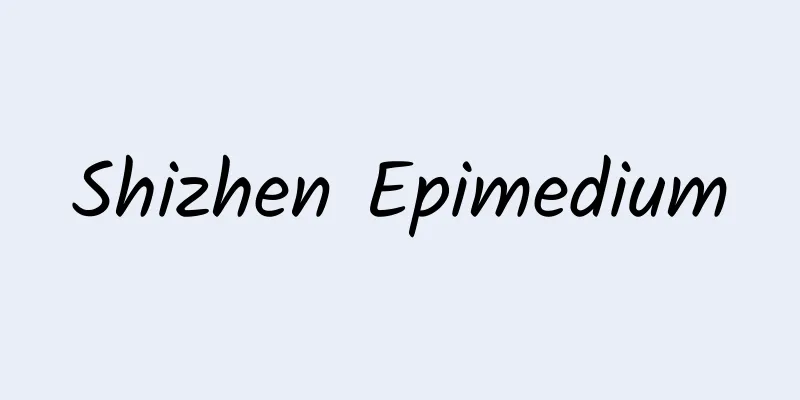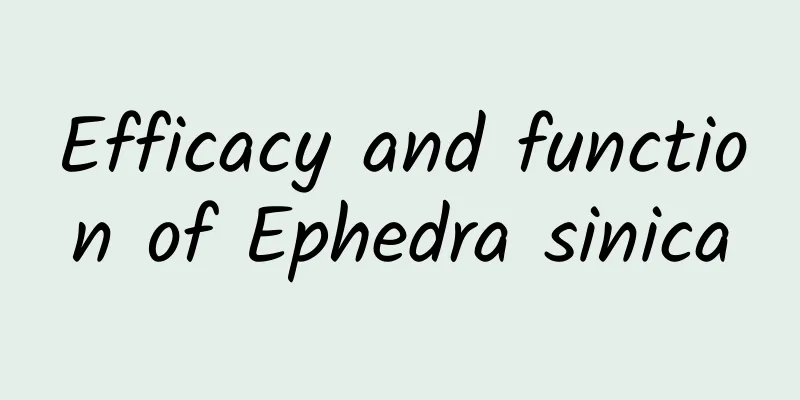Shizhen Epimedium

|
Li Shizhen is a very famous doctor in China. Born into a medical family, he compiled the book "Compendium of Materia Medica", which made a very important contribution to Chinese medicine. Chinese medicine is very profound. Within the scope of Chinese medicine, almost all animals and plants can be used as medicine to treat diseases. Shizhen Epimedium is a herb. Below I will give you a detailed introduction to Shizhen Epimedium. 1. Shizhen Epimedium Shizhen Epimedium (scientific name: Epimedium lishihchenii Stearn) is a perennial herb of the genus Epimedium, with a plant height of 30-40 cm. The creeping rhizomes are slender, about 2-3 mm in diameter. Leaves once-tripleted, basal and cauline, with 3 leaflets; leaflets leathery, narrowly ovate. 2. Morphological characteristics: Perennial herb, plant height 30-40 cm. The creeping rhizomes are slender, about 2-3 mm in diameter. The leaves are basal and cauline, with 3 leaflets; the leaflets are leathery, narrowly ovate, 5-11 cm long, 3.5-5 cm wide, acuminate or acute at the apex, deeply cordate at the base, the basal lobes of the terminal leaflets are nearly equal in size and obtuse, while the basal lobes of the lateral leaflets are significantly unequal in size, the inner lobes are smaller, rounded or obtuse, the outer lobes are larger, acute or shortly acuminate, dark green above, pale on the back, covered with multicellular long hairs or nearly glabrous, and the leaf margins have dense spiny teeth; the flower stem has 2 opposite leaves. The raceme is 7-12 cm long, with 5-11 flowers; the pedicel is 1-2 cm long and covered with glandular hairs; the flowers are yellow and large; there are 2 whorls of sepals, the outer sepals are caducous, 4-5 mm long, with white edges, and the inner sepals are close to the petals, ovate or narrowly oblong, light yellow, 10-11 mm long, 6-7 mm wide, and acute at the apex; the petals are much longer than the inner sepals, light yellow, with a subulate spur, 20-25 mm long, highly curved, and without petals at the base; the stamens are exposed, about 5 mm long, light yellow, the filaments are about 1 mm long, the anthers are about 4 mm long, and the petals are dehiscent; the pistil is about 7 mm long. Flowering period is April-May. 3. Growth habits: It grows under forests on hillsides. 4. Differences between similar species This species differs from Epimedium membranaceum K. Meyer mainly in that its inflorescence is shorter and has fewer flowers; it differs from E. franchetii Stearn in that its leaflets are smaller and covered with multicellular hairs on the back; the inner sepals are oblong and acute at the apex |
<<: What toothpaste is good for frequent toothaches?
>>: What is the appropriate ratio of Lingzhi to wine?
Recommend
Congratulations! Zhai Zhigang, Wang Yaping, and Ye Guangfu were awarded the Space Merit Medal
CPC Central Committee State Council Central Milit...
Don’t say “freezing like a dog” when the temperature drops. This is a bit unfair to dogs…
As the weather in the northern hemisphere gets co...
What does the new edible battery taste like? Crunchy chicken?
Audit Expert: Wang Jinlu, Power R&D Director,...
The efficacy and function of purple nan root
Purple nan root is a kind of traditional Chinese ...
What does the skyrocketing price of KFC’s limited edition blind boxes tell us about our psychology?
Key Points ★ The “Pandora Effect” makes us flock ...
Refresh your cognition! Chinese researchers create the first "never-melting ice and snow"
The 2022 Beijing Winter Olympics has opened, and ...
Can Yi Mu Cao and Xiao Yao Wan be taken together?
Can Xiaoyao Pills and Motherwort Paste be taken a...
The best way to dry your quilt, you will never think of it
The quilt can be said to be our good comrade who ...
The efficacy and function of Lygodium japonicum root
The medical value of Hematoxylin and Sinensis roo...
Do not pick or eat poisonous plants on the plateau!
As the temperature continues to rise Spring on th...
The latest national maternity leave map is out! The provinces with the longest paternity leave for men are actually these provinces...
Recently, many places across the country have ann...
Benefits and Uses of Elderflower
The effects of elderflower can dispel wind and da...
What are the benefits of drinking water soaked with Atractylodes lancea and lotus leaves?
As we all know, drinking tea has gradually become...
The role of mulberry leaves
Mulberries, which grow on mulberry trees, are a v...









